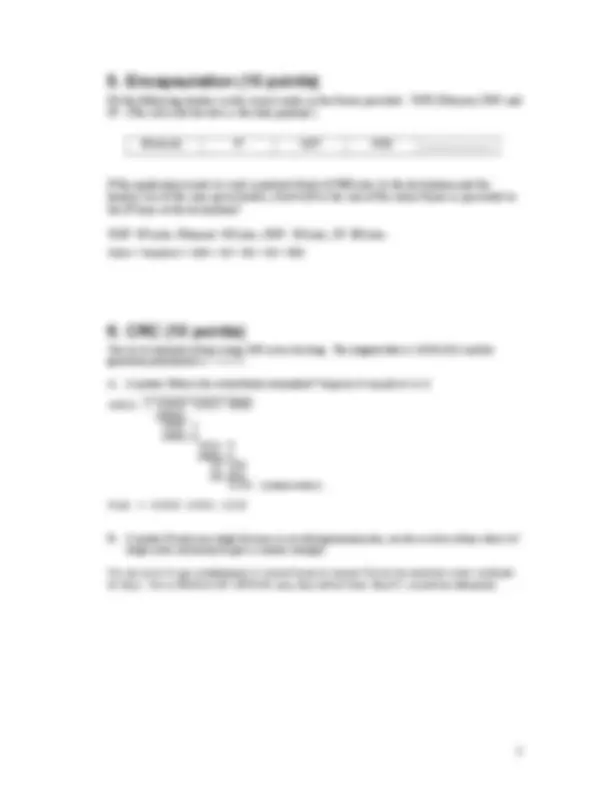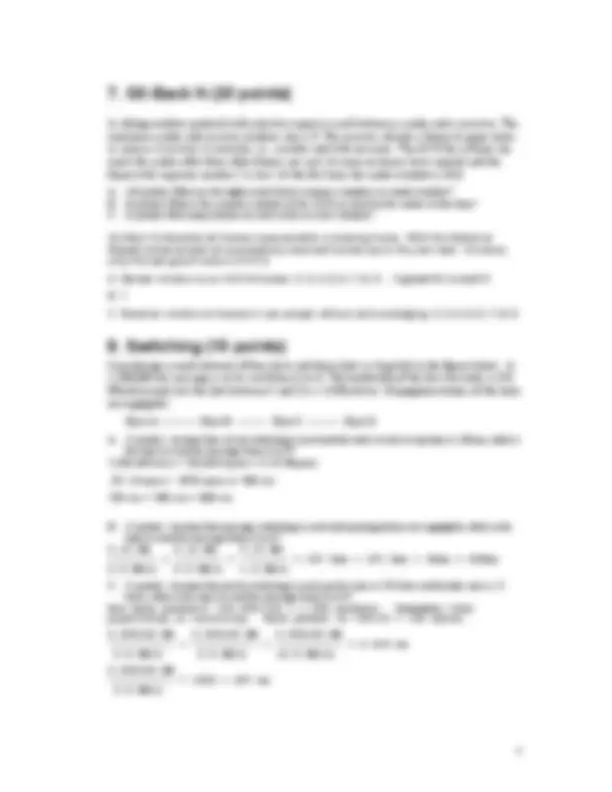




Study with the several resources on Docsity

Earn points by helping other students or get them with a premium plan


Prepare for your exams
Study with the several resources on Docsity

Earn points to download
Earn points by helping other students or get them with a premium plan
Community
Ask the community for help and clear up your study doubts
Discover the best universities in your country according to Docsity users
Free resources
Download our free guides on studying techniques, anxiety management strategies, and thesis advice from Docsity tutors
Material Type: Exam; Class: 198 - INTERNET TECHNOLOGY; Subject: COMPUTER SCIENCE; University: Rutgers University; Term: Summer 2004;
Typology: Exams
1 / 4

This page cannot be seen from the preview
Don't miss anything!



st
a. Phase b. Amplitude c. Time d. Frequency
A. (2 points) What is the successful HTTP response message?
B. (3 points) Complete the following HTML fragment. This form displays the text “Last Name:” and has a single text box for the user to enter their last name. The form has a single button to send the form data to the server. The form should send its data to a program called “exam1.cgi” on the server remus.rutgers.edu. The “exam1.cgi” program will expect a single parameter called “lastname” which should NOT be sent as part of the URL.
3. Parity (15 points)
a. (5 points) Suppose the two bits shown with circles are shown to be in error. Explain how this particular error is detectable using 2-D parity. Is the error detectable using a normal per character even parity? b. (5 points) Are the errors shown above correctable using 2-D parity? Why or why not? c. (5 points) Are all 2-bit errors correctable using 2-D parity? Why or why not?
a. Although the error is not detectable using single parity bits because both errors occur in the same word (character 6), the errors do occur in different columns which allows 2-d parity to detect it.
b. NO, even though we know which columns the errors occur in, there is no way to determine which word they are in
c. NO, even bit errors are not always DETECTABLE and never CORRECTABLE
4. Performance Analysis (15 points)
Which has better overall performance, Tape or WAN? Performance = minimal data delay. Data delay = Propagation Delay + Transmission Delay.
As with the homework problem, propagation delay for the WAN (in comparison to Tape) is negligible. Conversely, transmission delay for Tape is negligible.
Tape can carry 1600 GB or 12,800 gigabits at a speed of 60 km/hr (or 0.0167 km/sec). Time to travel a distance x is x/0.0167 or 60x sec****. Tape has a data rate of 12800/60 x Gbps or 213000/ x Mbps. When is this greater than 2 Mbps? For x < 106500.
7. G0-Back N (20 points)
A. (10 points) What are the highest and lowest sequence numbers in sender window? B. (6 points) What is the sequence number of the ACK received by the sender at this time? C. (4 points) How many frames are now in the receiver window?
Go-Back N discards all frames received after a missing frame. With the Selective Repeat enhancement all successfully received frames (up to WR) are kept. However, only the last good frame is ACK’d.
A. Sender window is un-ACK’d frames: 2, 3, 4, 5, 6, 7, 8, 9 … highest=9, lowest=
B. 1
C. Receiver window is frames in can accept without acknowledging: 2, 3, 4, 5, 6, 7, 8, 9
8. Switching (15 points)
A. (5 points). Assume that circuit switching is used and the total circuit set-up time is 100 ms, what is the time to send the message from A to D? 1,200,000 bits = 150,000 bytes = 0.15 Mbytes
.15 / .8 secs = .1875 secs or 188 ms
100 ms + 188 ms = 288 ms
B. (5 points). Assume that message switching is used and queuing delays are negligible, what is the time to send the message from A to D? 0.15 MB 0.15 MB 0.15 MB -------- + -------- + -------- = 187.5ms + 187.5ms + 94ms = 469ms 0.8 MB/s 0.8 MB/s 1.6 MB/s
C. (5 points). Assume that packet switching is used, packet size is 150 bytes and header size is 15 bytes, what is the time to send the message from A to D? How many packets? 150,000/150 = 1,000 packets. Remember that pipelining is occurring. Each packet is 150+15 = 165 bytes.
0.000165 MB 0.000165 MB 0.000165 MB ----------- + ----------- + ----------- = 0.619 ms 0.8 MB/s 0.8 MB/s (0.8 MB/s)
0.000165 MB ----------- * 1002 = 207 ms 0.8 MB/s